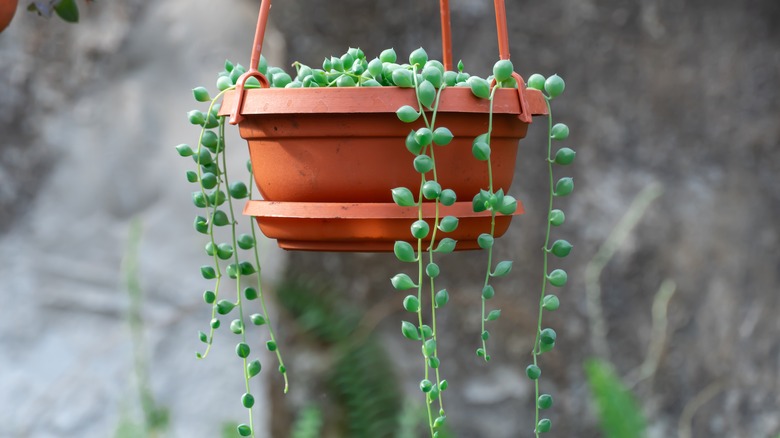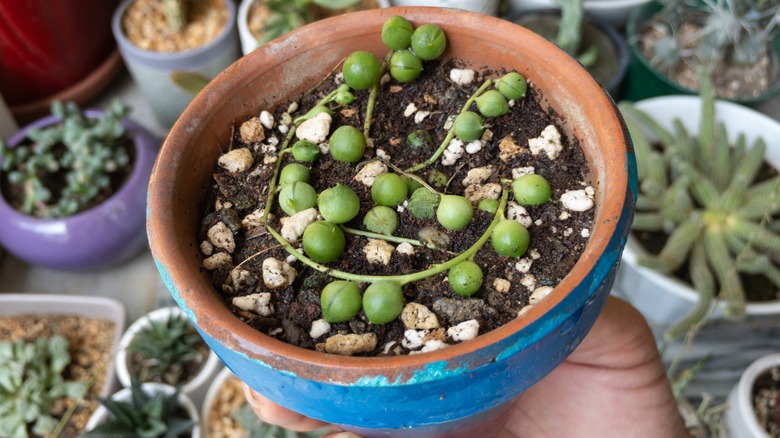Tips For Propagating Your String Of Pearls Plant Like A Pro
When it comes to beautiful succulents, string of pearls, aka Senecio rowleyanus, are real winners. They have long, trailing stems with small, spherical leaves that give them their name and make them a popular choice for the home or your sunny window. Aside from being beautiful, they're also surprisingly easy to maintain — as long as they have a bit of indirect light and minimal water, they're pretty much going to be fine.
Even better, you don't always have to go out and buy more 'strings' when you want them — instead, you can try propagating them! The spring and summer months are the ideal times when these plants burst with life, actively produce new growth, and have the highest potential for successful propagation. The longer daylight hours and warmer temperatures contribute to faster root development, enhancing the overall vigor of the plants. However, in places with milder climates and extended growing seasons, propagation might be feasible throughout the year.
Remember, the health of the parent plant is also important. Only propagate a healthy string of pearls free from diseases, pests, or stress to ensure robust and quicker-growing new plants. A weak or afflicted parent plant is more likely to struggle during propagation, leading to decreased chances of success and the risk of spreading issues to the new cuttings. Now, how do you successfully grow a string of pearls plant? Luckily, there are two methods — soil propagation and rooting in water.
How do you propagate string of pearls plants?
Let's start with soil propagation, a favored method due to its simplicity and effectiveness –- perfect for beginners. Begin by selecting healthy, plump stems that are neither too young nor too old. Fill a small container with a well-draining potting mix suited for these plants or pumice soil, which is perfect for succulents. Cut stems approximately 2 to 4 inches long, right below a leaf node. Allow the cut ends to dry and callous over for a few days to prevent rot after planting.
Once this is done, insert the cut end an inch into the soil, placing the container in a bright spot but away from direct sunlight while maintaining a temperature of 65 to 75 degrees Fahrenheit. Water lightly post-planting, taking care to avoid overwatering. Within weeks, root formation should begin, indicated when the cutting resists a gentle tug. Once rooted and new growth is evident, carefully transplant the plant to a larger pot with standard succulent soil.
Alternatively, water propagation offers a quicker path to root development but can be a bit more finicky. Select and cut healthy stems as before, but skip the drying step. Place the cuttings in a clear glass with water, ensuring stems are submerged while leaves remain above. Keep the glass in a spot with bright, indirect light, and change the water weekly to prevent bacteria from growing. Once roots are a few inches long, transition the cuttings to the soil, handling the roots with care to minimize stress during adaptation so you are left with a healthy string of pearls in no time!

